Comets
Often called “dirty snowballs”, comets are frozen balls of rock, gas, ice and dust that originated in the deepest depths of the solar system billions of years ago. They travel around the Sun in highly elliptical orbits. As they approach the Sun, they begin to glow and form tails of dust and gas. These tails stretch for millions of miles and can often be seen from Earth. People in the past sometimes believed that comets were omens, a sign that something bad was about to happen. Short period comets reappear fairly regularly, while long period comets can take thousands or even millions of years to show up again. Comets sometimes collide with other objects and it's possible that the water present on Earth actually came from one.
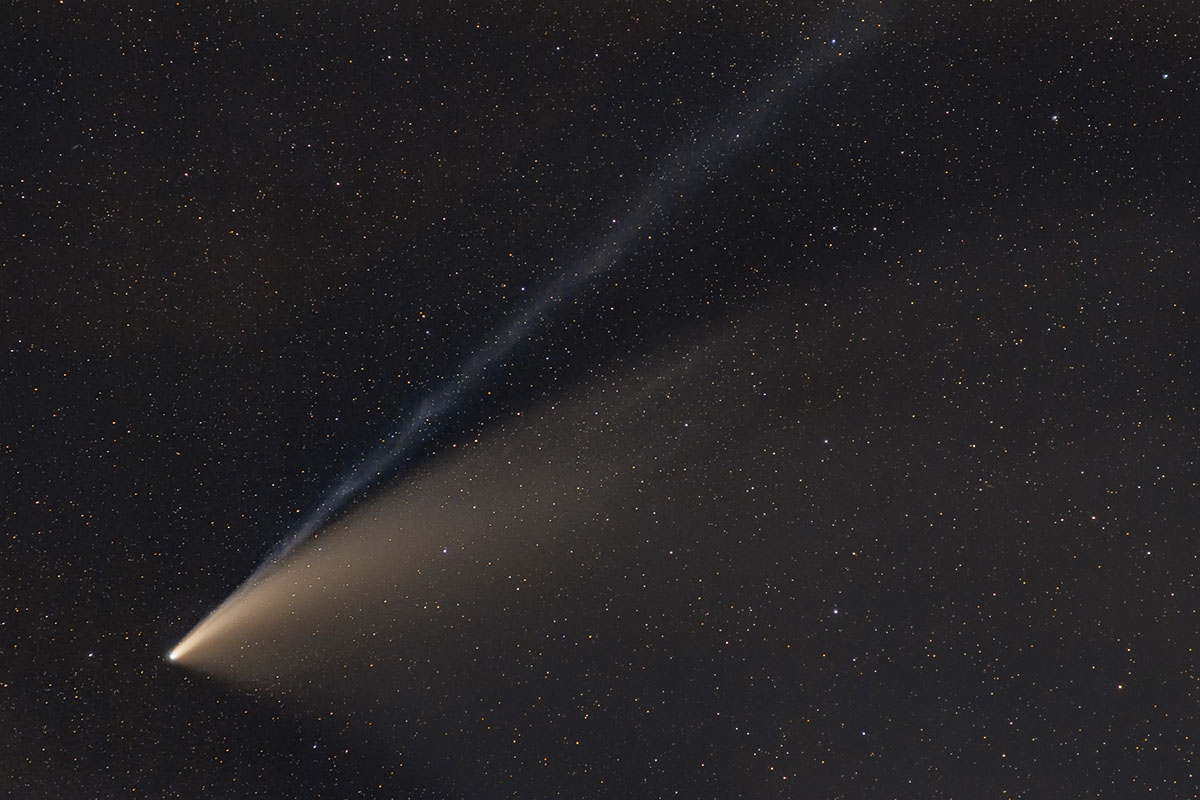
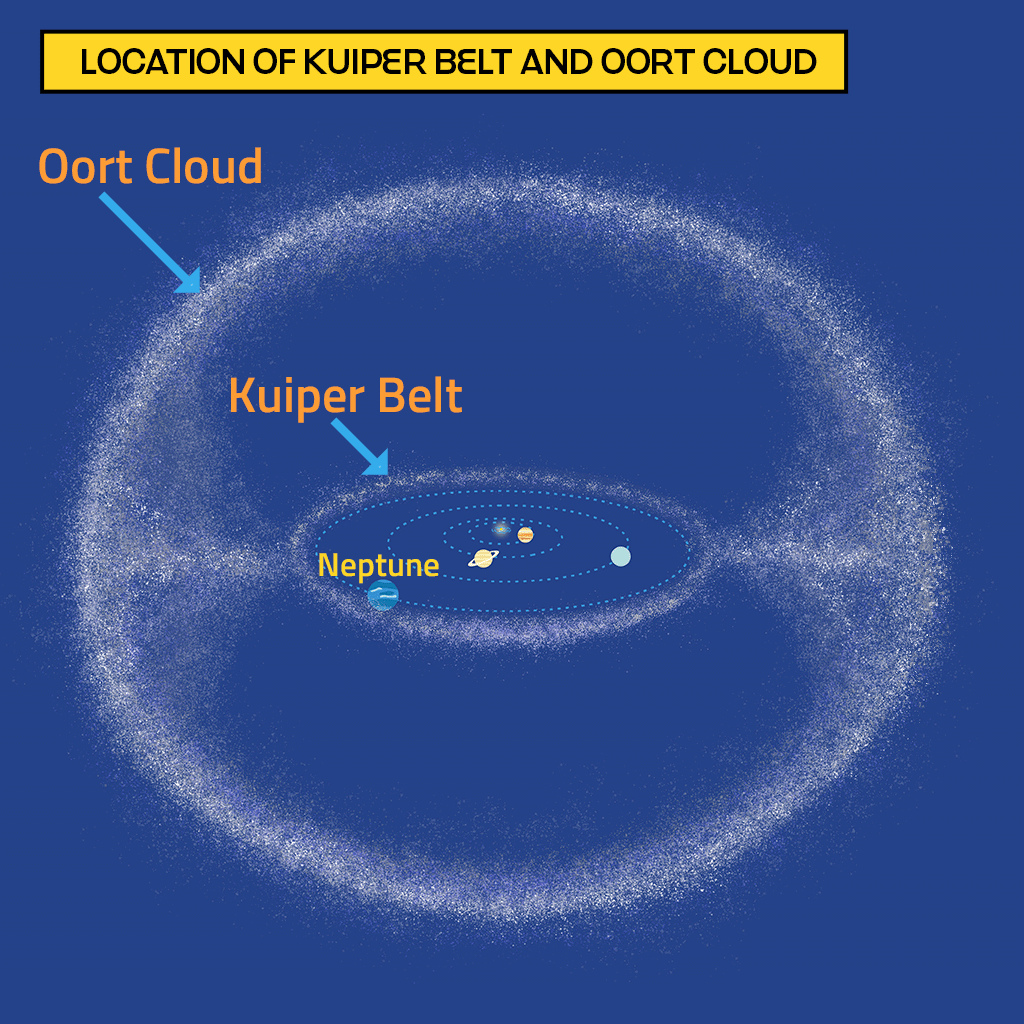
Around 4.6 billion years ago, the objects in the solar system began to form in a cloudy and dusty disk
of materials swirling around the newly born Sun. This disk was called the protoplanetary disk. Tiny
pieces of dust within the disk joined with other pieces of dust to form bigger ones. The process continued
until the dust bits became stones, stones became rocks, rocks became boulders, and boulders became asteroids,
moons and even planets.
This also happened out in the furthest reaches of the solar system in a region beyond Neptune called the
Kuiper Belt, and possibly even further out in the Oort Cloud. As it’s so cold out there, the tiny pieces of
dust were coated with frozen gases and ice. These frozen balls of dust continued to join with other frozen
balls of dust and eventually became larger chunks of frozen rock. Some of these chunks became several miles
large. These are comets.
Comets have three distinctive parts, a nucleus, coma and a tail.
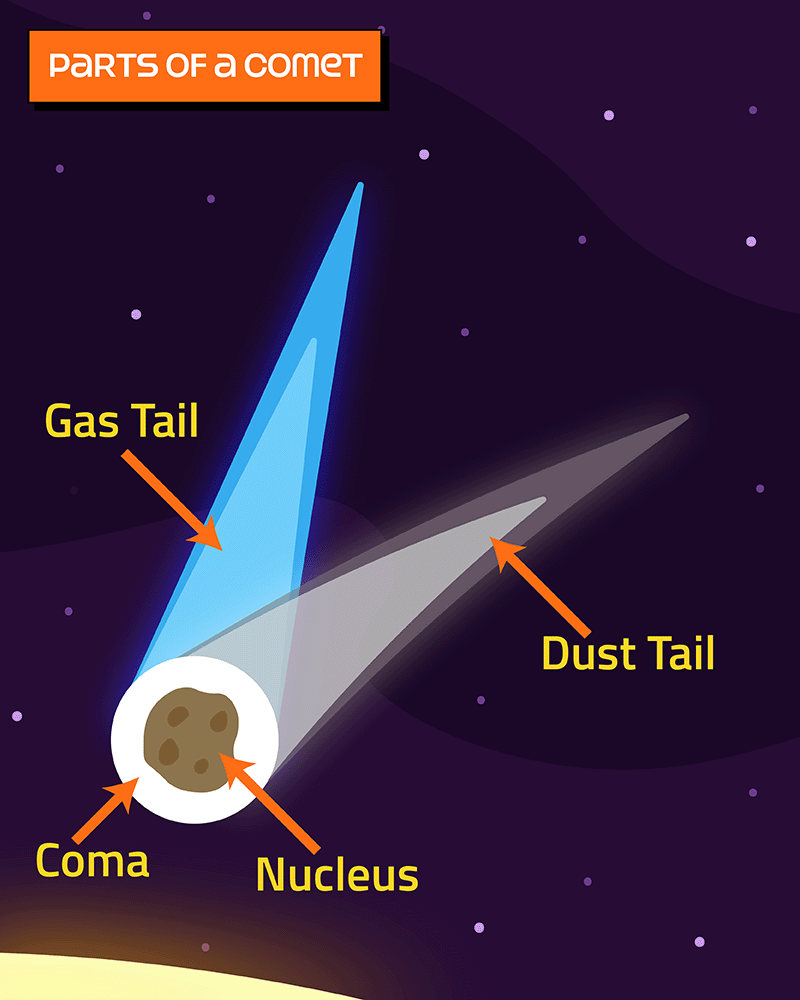
Nucleus
The nucleus is the main body of a comet. It is the comet’s core and contains the frozen rocks, ice, gas and dust from its formation billions of years ago. The nucleus of a comet can be up to 10 kilometres (6 miles) wide. The nucleus is covered with a surface of dust and ice.
Coma
As comets gets closer to the Sun, they get hotter. The dust and ice on its surface begins to vapourise and forms its coma. This is a blanket of gas that surrounds the comet, kind of like a layer of fog around it. The coma can become very bright and large, reaching out up to 80,000 kilometres (30,000 miles) from the nucleus.
Tail
Comets also form a tail as they approach the Sun. Comets actually have two tails, one of gas and one of dust. The Sun’s solar wind and radiation blows gas and dust out of the comet’s coma into tails that can stretch for hundreds of millions of kilometres/miles. The tails always face away from the Sun. The gassy tail is usually straight while the dust tail can be slightly curved.
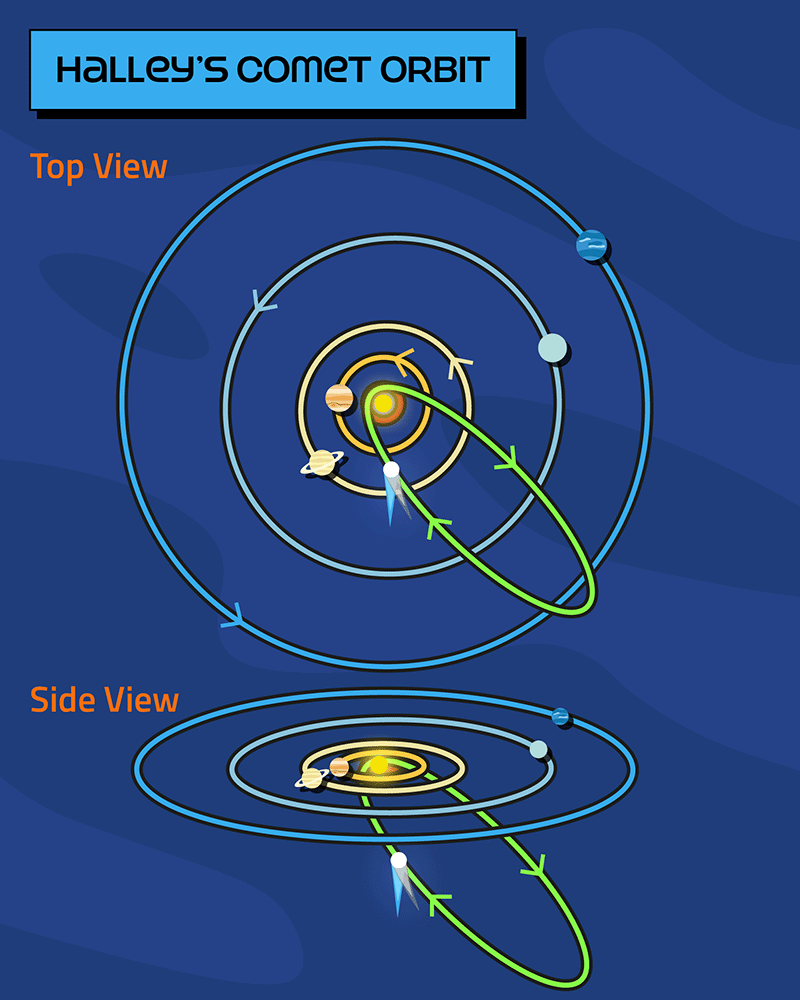 Comet Orbit Diagram
Comet Orbit Diagram
Comets have highly elliptical orbits - long and narrow rather than circular. They travel from the Kuiper Belt or Oort Cloud and are brought inwards towards the Sun. They pick up speed as they get closer to the Sun, travel around it and continue back outwards again. Comets often have inclined orbits, so they don't orbit on the same plane as the solar system's planets.
There are two main types of comets. Short period comets take less than 200 years to orbit the Sun. Long period comets take longer than 200 years. Some long period comets can take thousands or even millions of years to orbit the Sun.
Halley's Comet is perhaps the most well-known comet. Its orbit of approximately 76 years means that it's a short period comet. The next time it'll be visible from Earth will be in 2061.
Hale-Bopp was a very bright comet that was easily visible in 1997. As it's a long period comet, it probably won't be seen again from Earth again for another 2,500 years.
Not all comets orbit the Sun. Some comets orbit Jupiter instead.
Comets often have orbits which bring them close to other objects as they travel through the solar system. Some comets get a little too close for comfort and end up crashing into them. Sun-grazers are comets that either collide with the Sun or get so near to it that the Sun's gravity pulls them apart and vapourises them. In 1994, the comet Shoemaker-Levy 9 famously smashed into Jupiter. As the comet approached, Jupiter's gravity tore it into fragments which then impacted its atmosphere, each piece burning up as it collided.
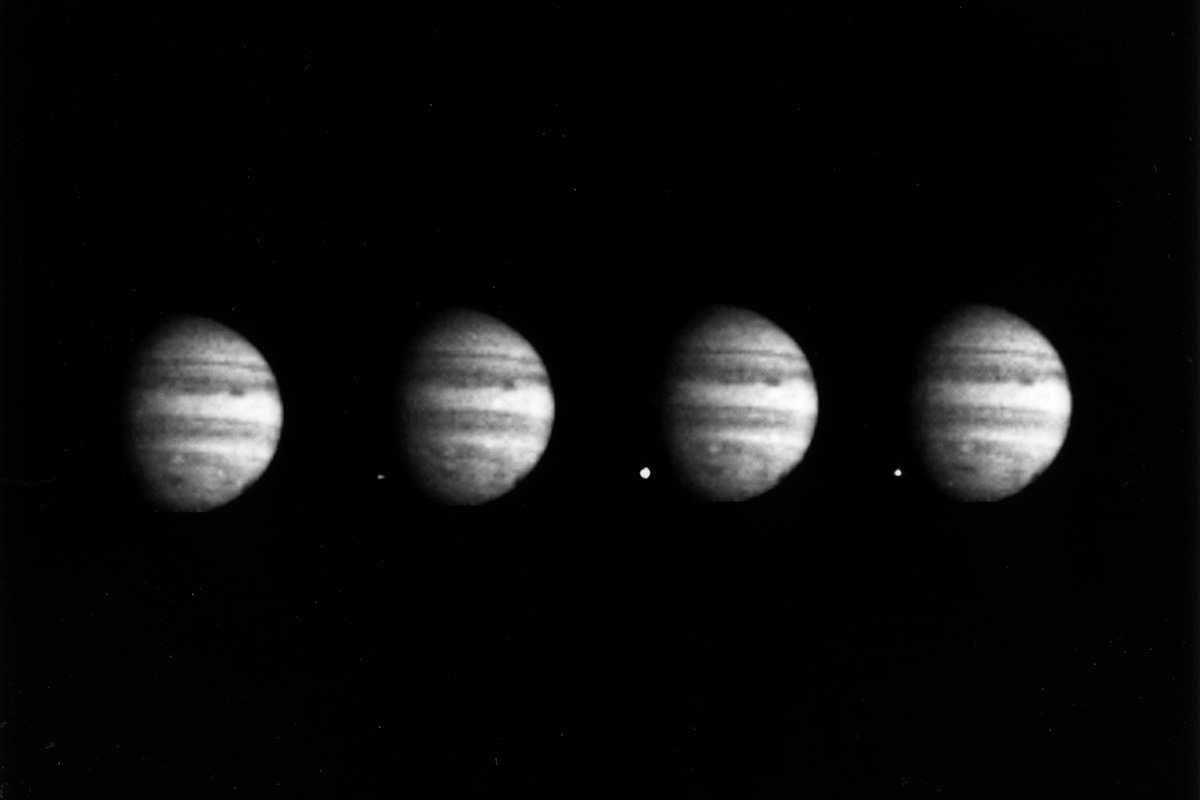
Not all comets that disintegrate head straight to their doom. Some remain as fragments that wander the solar system for hundreds, thousands or even millions of years. Sometimes the fragments cross the orbit of a planet and rain down on that planet as meteors. Meteor showers are the result of planets, like Earth, passing through the remnants of destroyed comets.
There is a very remote possibility that a full-sized comet could crash into Earth. The problem with comets is that they aren't easy to detect. They are usually small, dark objects which come from the most distant corners of the solar system. They only really get discovered a year or two before they make their closest approach which doesn’t leave much time to prepare if one is headed for Earth. It's thought that the object that collided with Earth 66 million years ago and wiped out the dinosaurs may have been a comet.
Comets still carry around the materials from their formations billions of years ago. As these materials have remained frozen solid in their cores ever since, comets are believed to hold the building blocks of the solar system.
Some of that material is water ice. On Earth, water is essential for the existence of life but how it got to Earth is still unknown. One theory is that it was taken to Earth on board a comet billions of years ago. The comet crashed into the young planet and spilled its water. It might not have just been water that the comet brought to Earth. It may also have brought an ingredient for life to form in the first place, amino acids. We're not going to go into what amino acids are, but some were found in dust samples recovered from the comet Wild 2 from a spacecraft called Stardust in 2004.
Mercury also has water on its surface, which is quite surprising as it's the closest planet to the Sun. The water there is frozen in deep craters which are in permanent shadow of the Sun. What baffles scientists is how it got there. Some think it may have come from comets crashing into the planet. The impacts formed craters which were filled with the water contained inside the comet.
People have observed comets for thousands and thousands of years. When they approach close enough to the Sun and begin to glow, they can be very easy to spot in the sky and can be visible for weeks or months.
In times gone by, people didn't really know what comets were but they often saw them as bad omens. They believed that the appearance of one could foretell the coming of a great disaster, like a loss in a military battle or the death of a ruler. The Bayeux Tapestry is an embroidery from the 11th Century which features a star with a tail as a warning of the forthcoming conquest of England by invaders from Normandy. That star with a tail was Halley’s Comet, although 11th Century people didn't know it at the time.
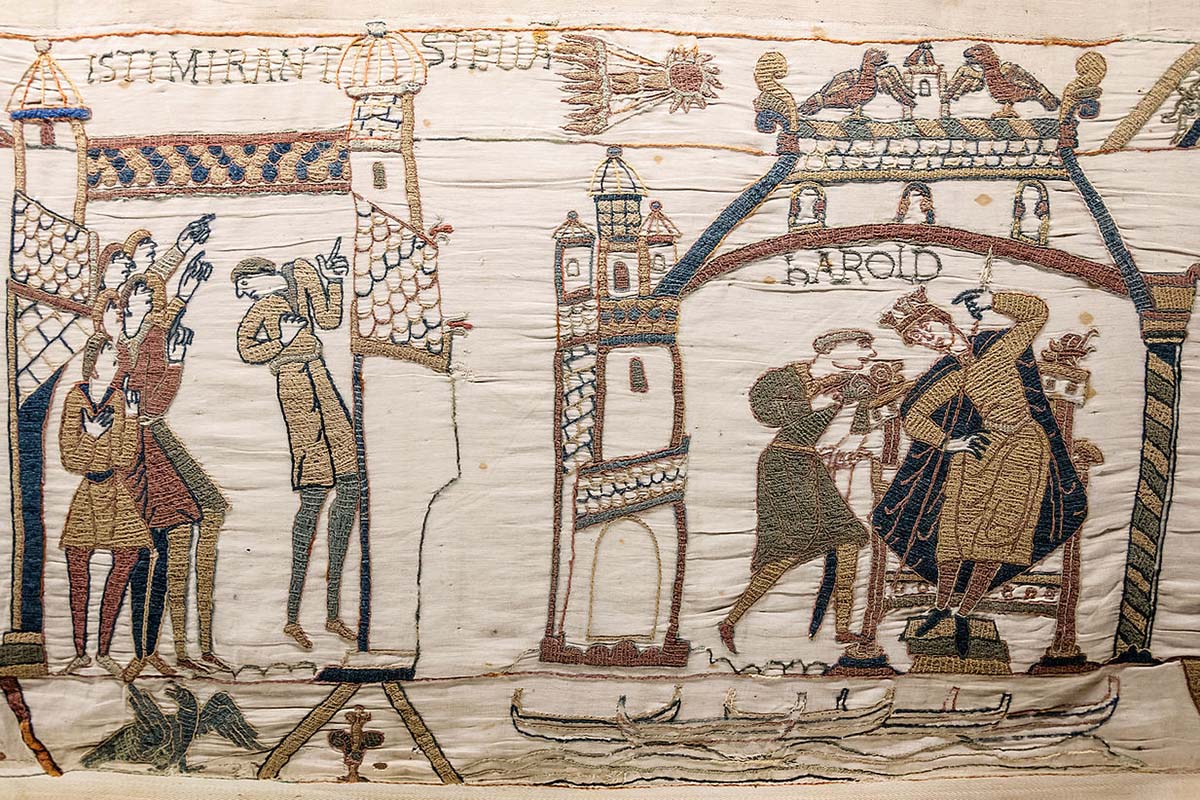
It was because of Halley's Comet that astronomers came to learn that these mysterious stars are simply objects that orbit the Sun and make reappearances. Edmond Halley (1656 - 1742) noticed that there were historical records of a star with a tail appearing regularly every 76 or so years. Rather than it being a different star each time, he thought that it might actually be the same object, and calculated that it would reappear in 1758. His forecast came true. Although Halley wasn’t alive to witness its reappearance, the comet now bears his name.
Since the first comet was recognised, there have been over 4,500 comets discovered. There are thought to be billions in the solar system, most within the Kuiper Belt or Oort Cloud.
Comets usually get their names from whoever discovered them. Comet Hale-Bopp was discovered by Alan Hale and Thomas Bopp in 1995, and Shoemaker-Levy 9 was discovered in 1993 by Carolyn and Eugene Shoemaker and their colleague and friend David Levy. It is called Shoemaker-Levy 9 because it was the 9th comet they discovered.
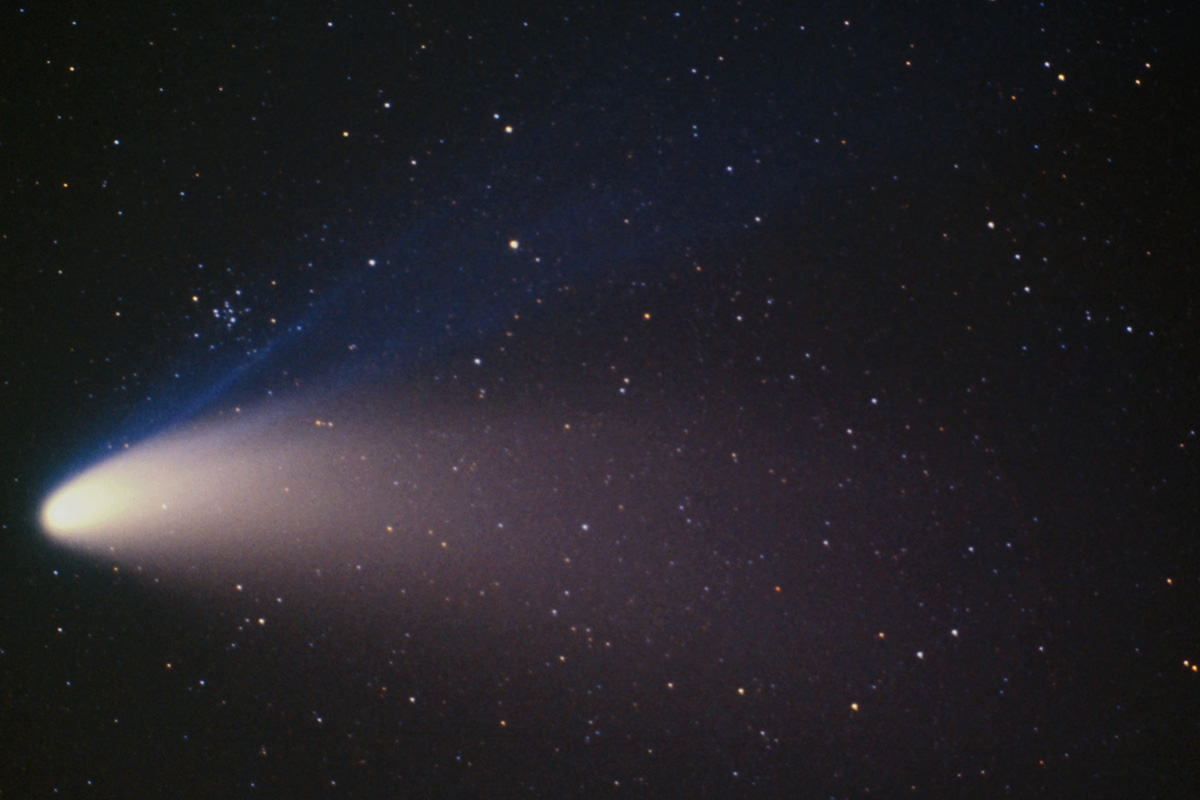
Letters and numbers are sometimes put in front of the names of comets which provide detail of what type of comet it is and when it was discovered.
Some comets are discovered by spacecraft or space telescopes so get their names from those instead. Comet NEOWISE is a comet that was discovered by the WISE space telescope in 2020 as part of the NEOWISE program.
There are a handful of comets that were named in honour of the astronomers who calculated their orbits. The comets themselves had already been observed but without knowing what they were. Halley's Comet is one. There is also Encke's Comet, Lexell's Comet and Comet Pons-Coggia-Winnecke-Forbes. The last one is more commonly known as Comet Crommelin, but Comet Pons-Coggia-Winnecke-Forbes sounds better!
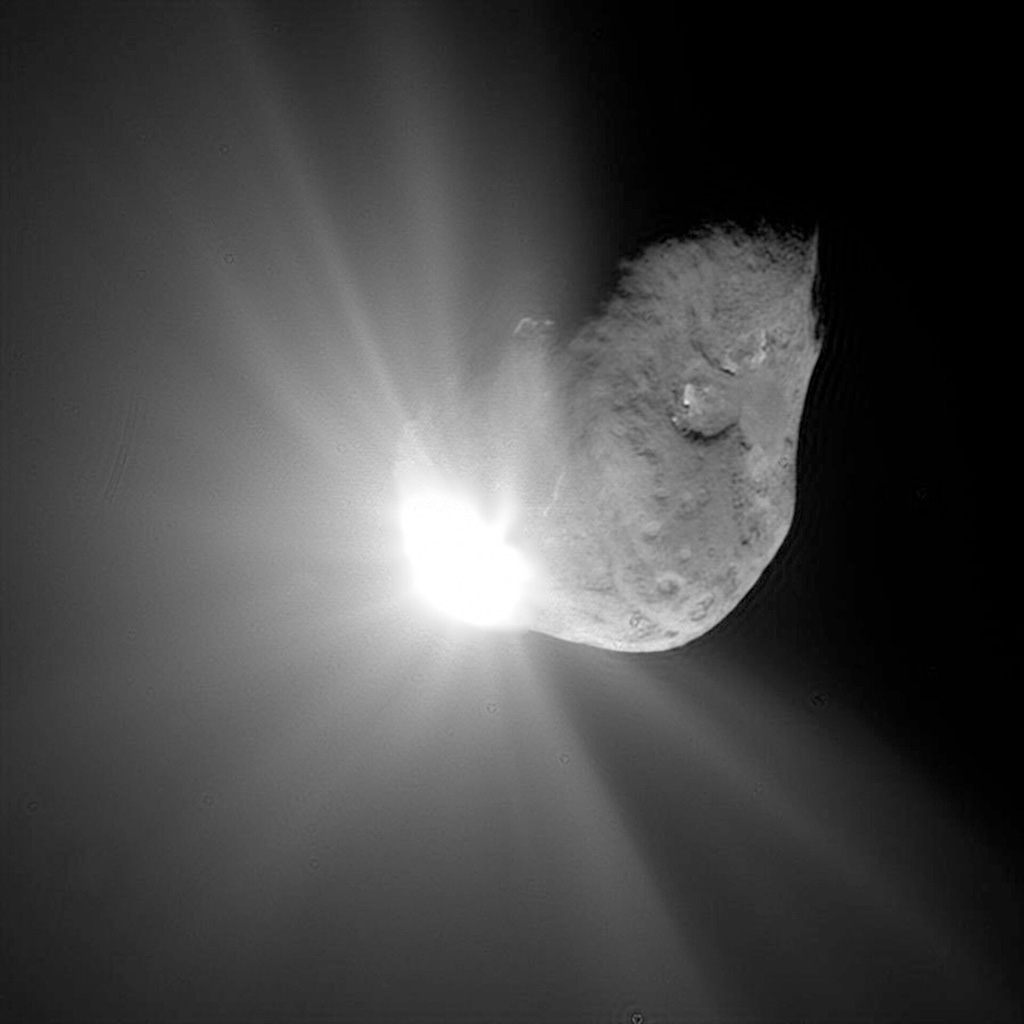
Scientists are particularly keen to learn more about comets. They consider them to be frozen time capsules which hold the key to how the solar system formed. When they get close enough to the Sun, they spew out some of these contents in their coma and tails.
In 1986, the European spacecraft Giotto made the first close-up observations of a comet when it came as near as 586 to Halley’s Comet. It studied the shape and structure of Halley’s Comet and revealed that 80% of the material ejected from it was water.
Stardust was a spacecraft that came within 236 kilometres (147 miles) of Comet Wild 2’s nucleus in 2004 and collected a sample of materials from its coma. This sample was returned back to Earth for analysis where it was found that particles inside it are similar to ones found in the inner parts of the solar system, suggest that objects in the outer parts were made of the same things.
Deep Impact was a spacecraft which sent an impactor to crash into the surface of Comet Tempel 1 in 2005. The collision, on 4th July 2005, left a 100 metre wide crater and produced a huge bright dust cloud. The space craft anaylsed the materials that were ejected from the impact, discovering that its surface was more powdery than first imagined and that it contained less ice and more dust than they thought it would. 5 million kilograms of water and up to 25 million kilograms of dust were ejected from the comet as a result of the impact.





